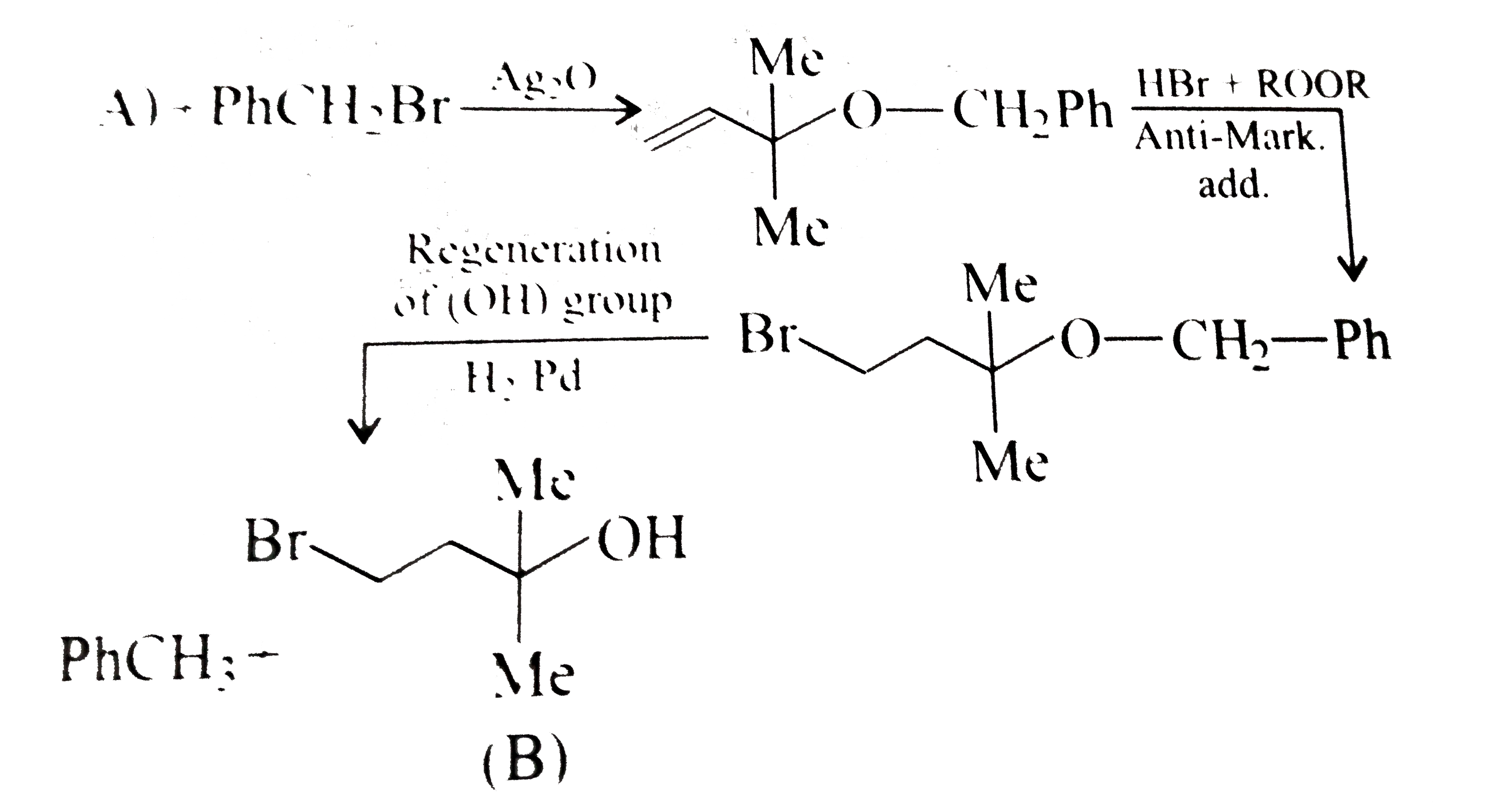InterviewSolution
Saved Bookmarks
| 1. |
Which is the best method for the protection of (OH) group during the following synthesis ? Explain. a. |
Answer» Solution :a. In the conversion of (A) to (B), the `(C=C)` bond in (A) has to be converted to `(BR--CH--CH--)` bond by the addition of HBr in the presence of peroxide (ROOR) by anti-Markovnikov addition. If `(--OH)` group is not protected, it WOULD also be converted to (Br) group is not protected, it would also be converted to (Br) group, since it is allyl alcohol. So, `(--OH)` has to be protected before reacting (A) with `(HBr + ROOR)`. Protection of `(--OH)` is best by benzylation method: The silylation method is not preferred due to steric hichrance of BULKY silyl group, and because `(--OH)` group is also sterically hindered. ROTHP cannot be used becaused alcohol would LIKELY rearrange under the acidic CONDITIONS of the ether formation.  b.In the conversion of (C) to (D), `(--CH_(2)Br)` group has to be converted to `(--CH_(2)--D)` group by reacting (A) with Mg followed by reaction with `D_(2)O`. If `(--OH)` is not protected `(--MgBr)` would react with the acidic H of (OH) group. `HO--CH_(2)CH_(2)Br + Mg rarr`  So, `(--OH)` group has to be protected before reacting (A) with `Mg//D_(2)O`. |
|